Travel the world
Climb the mountains
Post Page Advertisement [Top]
The Siberian Husky is a Large size working dog breed that originated in Northeast Asia. The breed belongs to the Spitz genetic family. With proper training, they make great home pets and sled dogs.It is recognizable by its thickly furred double coat, erect triangular ears, and distinctive markings.
The original Siberian Huskies were bred by the Chukchi people — whose hunter-gatherer culture relied on their help. It is an active, energetic, resilient breed, whose ancestors lived in the extremely cold and harsh environment of the Siberian Arctic. William Goosak, a Russian fur trader, introduced them to Nome, Alaska during the Nome Gold Rush, initially as sled dogs. The people of Nome referred to Siberian Huskies as "Siberian Rats" due to their size of 40–50 lb (18–23 kg), versus the Malamutes size of 75–85 lb (34–39 kg).
History
The Siberian Husky is believed to have originated among the Chukchi, a tribe of Siberian nomads. The breed's history is relatively unknown but DNA tests confirm that they are among the oldest of dog breeds. We do know that the Chukchi used the dogs as fast transportation and that they interacted with the Chukchi as a family dog. Huskies often slept with the children and provided warm comfortable beds for them. The Siberian Husky was imported to Alaska in 1908 and was used as sled dogs during the gold rush. They were used in the All-Alaska Sweepstakes, which is a 408-mile dogsled race, and continue to be an active competitor in the Sweepstakes even today. Records indicated that the last Siberian Husky was exported from Siberia in 1930 when the borders were closed by the Soviet government. The breed continued to thrive in North America. Although they changed slightly from their Siberian foundation dogs, the Chukchi Sled Dog, they still maintain many of the wonderful qualities of that breed. The Siberian Club of America was founded in 1938 and the Siberian Husky was recognized by the American Kennel Club in 1930 and the Canadian Kennel Club in 1939.
Read more at http://dogtime.com/dog-breeds/siberian-husky#xTjUD7CbLLH2ve5b.99
Description
Coat
A Siberian Husky's coat is thicker than that of most other dog breeds,comprising two layers: a dense undercoat and a longer topcoat of short, straight guard hairs.It protects the dogs effectively against harsh Arctic winters, but the coat also reflects heat in the summer. It is able to withstand temperatures as low as −50 to −60 °C (−58 to −76 °F). The undercoat is often absent during shedding. Their thick coats require weekly grooming.
Siberian Huskies come in a variety of colors and patterns, usually with white paws and legs, facial markings, and tail tip. The most common coats are black and white, then less common copper-red and white, grey and white, pure white, and the rare "agouti" coat, though many individuals have blondish or piebald spotting. Striking masks, spectacles, and other facial markings occur in wide variety. Merle coat patterns are not allowed. The American Kennel Club allows all coat colors from black to pure white.
Eyes
The American Kennel Club describes the Siberian Husky's eyes as "an almond shape, moderately spaced and set slightly obliquely." The AKC breed standard is that eyes may be brown, blue or black; one of each or Particoloured are acceptable (complete is heterochromia). These eye-color combinations are considered acceptable by the American Kennel Club.The parti-color does not affect the vision of the dog.
Nose
Show-quality dogs are preferred to have neither pointed nor square noses. The nose is black in gray dogs, tan in black dogs, liver in copper-colored dogs, and may be light tan in white dogs. In some instances, Siberian Huskies can exhibit what is called "snow nose" or "winter nose." This condition is called hypopigmentation in animals. "Snow nose" is acceptable in the show ring.
Tail
Siberian Husky tails are heavily furred; these dogs will often curl up with their tails over their faces and noses in order to provide additional warmth. As pictured, when curled up to sleep the Siberian Husky will cover its nose for warmth, often referred to as the "Siberian Swirl". The tail should be expressive, held low when the dog is relaxed, and curved upward in a "sickle" shape when excited or interested in something. It should be symmetrical, and not curved or deviated to the side; the tail can curl enough to touch the back.
Size
The breed standard indicates that the males of the breed are ideally between 21 and 24 inches (53 and 61 cm) tall at the withers and weighing between 45 and 60 pounds (20 and 27 kg). Females are smaller, growing to between 20 to 22 inches (51 to 56 cm) tall at the withers and weighing between 35 to 50 pounds (16 to 23 kg).
Behavior
The Husky howls rather than barks.They have been described as escape artists, which can include digging under, chewing through, or even jumping over fences.
Because the Siberian Husky had been raised in a family setting by the Chukchi and not left to fend for themselves they could be trusted with children.The ASPCA classifies the breed as good with children. It also states they exhibit high energy indoors, have special exercise needs, and may be destructive "without proper care".
Siberian Huskies have a high prey drive due to the Chukchi allowing them to roam free in the summer. The dogs hunted in packs and preyed on wild cats, birds, and squirrels, but with training can be trusted with other small animals. They would only return to the Chukchi villages when the snow returned and food became scarce. Their hunting instincts can still be found in the breed today.
A 6 ft (1.83 m) fence is recommended for this breed as a pet, although some have been known to overcome fences as high as 8 ft (2.44 m).Electric pet fencing may not be effective.They need the frequent companionship of people and other dogs, and their need to feel as part of a pack is very strong.
Health
A 1999 ASPCA publication gives the average life span of the Siberian Husky as 12 to 14 years.Health issues in the breed are mainly genetic, such as seizures and defects of the eye and congenital laryngeal paralysis.Hip dysplasia is not often found in this breed; however, as with many medium or larger-sized canines, it can occur.The Orthopedic Foundation for Animals currently has the Siberian Husky ranked 155th out of a possible 160 breeds at risk for hip dysplasia, with only two percent of tested Siberian Huskies showing dysplasia.
Siberian Huskies used for sled racing may also be prone to other ailments, such as gastric disease,bronchitis or bronchopulmonary ailments ("ski asthma"),and gastric erosions or ulcerations.
Modern Siberian Huskies registered in the US are largely the descendants of the 1930 Siberia imports and of Leonhard Seppala’s dogs, particularly Togo.The limited number of registered foundational dogs has led to some discussion about their vulnerability to the founder effect.
Care
Siberian Huskies need to be exercised 30 to 60 minutes daily to keep them from becoming bored. They make excellent jogging companions, but should not be exercised in hot weather. Surprisingly, they need only a small (but secure) backyard to expend their energy. Bottom line: Siberian Huskies need to be working to stay happy. Usually just maintaining your own active life through hiking and other outdoor sports will keep you Siberian Husky healthy, happy and out of trouble. As mentioned earlier, training is a must with this breed and you may want to invest in more advanced obedience classes. This can be difficult for many owners and trainers as the breed is very intelligent and will determine the difference between classes and home. They will behave wonderfully at class, following all instructions and commands, but at home they may revert back to the stubborn dog that stole your heart. This can be frustrating, but you will find that patience, time, and a little of your own stubbornness will pay off.Crate training is an important tool that is often recommended by breeders. It keeps you dog and puppy safe and also gives them their own safe haven to retreat to when they are feeling overwhelmed or tired. A crate should never be used as a punishment.Leash training is also a must as Siberian Huskies should never be left off leash when they are not in a fenced area. They love to run and will do so without any thought of how far away you are. You can easily lose your Siberian Husky if he decides to chase something or simply enjoy a heartfelt run. Siberian Huskies do have a high prey drive and that is another reason why they should be leashed during walks.
Children and Other Pets
Huskies make great pets for households with children. They can be very tolerant of children, but like all other dogs, should be supervised when around young children. Always teach children how to approach and touch dogs, and always supervise any interactions between dogs and young children to prevent any biting or ear or tail pulling on the part of either party. Teach your child never to approach any dog while he's eating or to try to take the dog's food away. No dog should ever be left unsupervised with a child. Siberian Huskies do get along with other dogs but it is still important to take your puppy to socialization classes. This gets them used to other dogs and also to people, although they are also very affectionate to strangers. Socialization teaches puppies how to behave and greet other dogs and their owners. Keep in mind the history of this breed. The harsh conditions in Siberia created a strong prey drive in this breed because food was often hard to find. As a result, many Huskies today maintain that prey drive toward small animals such as squirrels, rabbits, and cats. Some Huskies, however, thrive in multi-pet households, especially when they are raised with other pets from puppyhood.
In Popular Culture
The animated show Road Rovers features Exile who is a Siberian Husky. The show Krypto the Superdog features Tusky Husky. The film Eight Below features six Siberian Huskies whose names are Max, Maya, Truman, Old Jack, Dewey and Shorty. In the horror television series Z Nation, a character adopts a Siberian Husky after its owner freezes to death outside his base, and the other dog turned into a zombie. Everest in the animated series PAW Patrol is a Siberian Husky.
Source: Wiki
Subscribe to:
Post Comments (Atom)

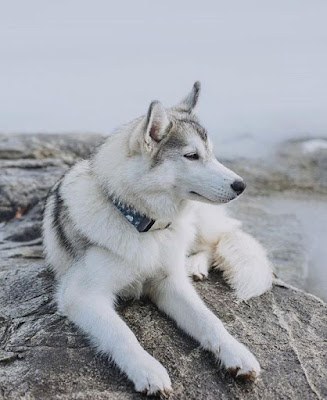
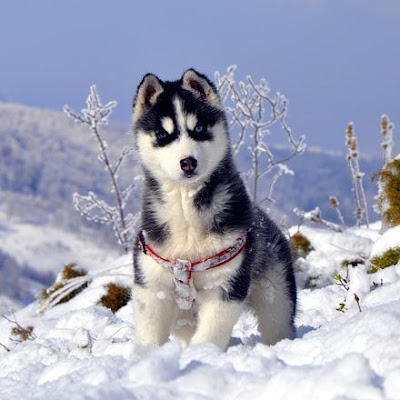
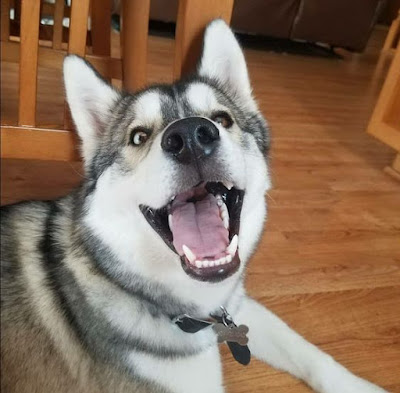

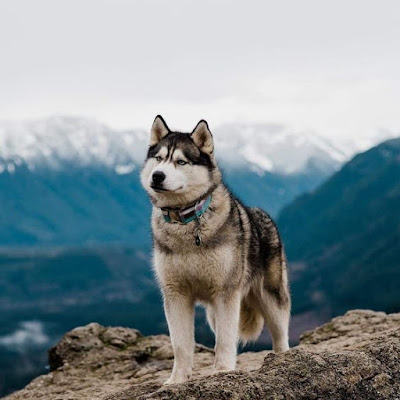

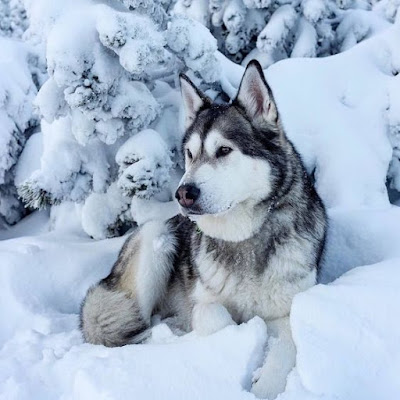













These Siberian husky puppies are so beautiful and loving. And you've mentioned all the information that i was looking for. Thanks
ReplyDeleteThese Siberian husky puppies are so beautiful and loving. And you've mentioned all the information that i was looking for. Thanks
ReplyDelete